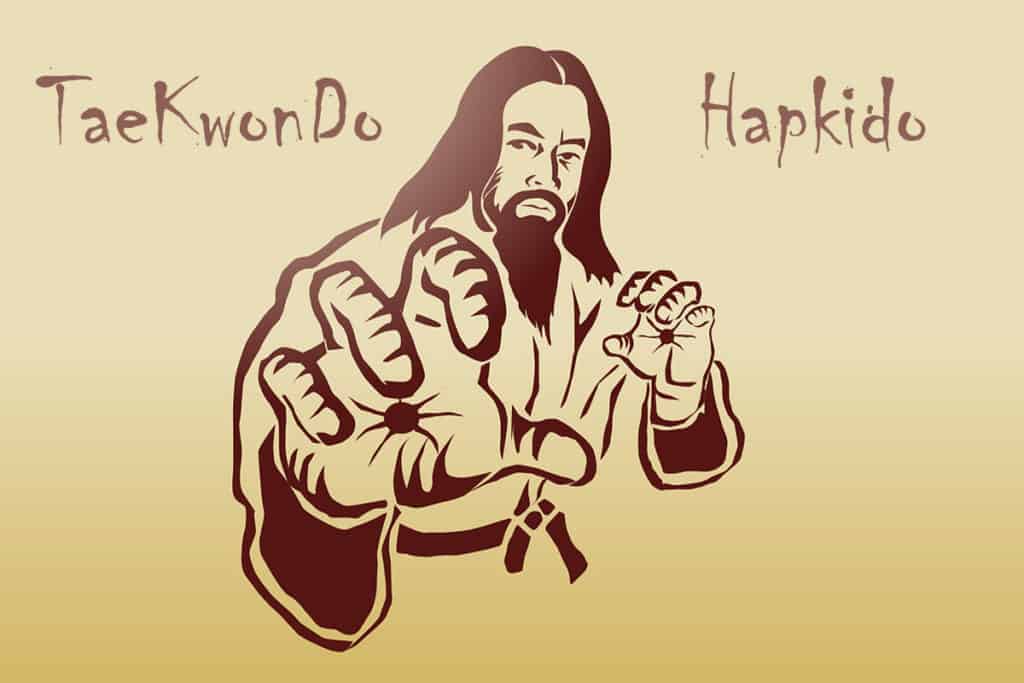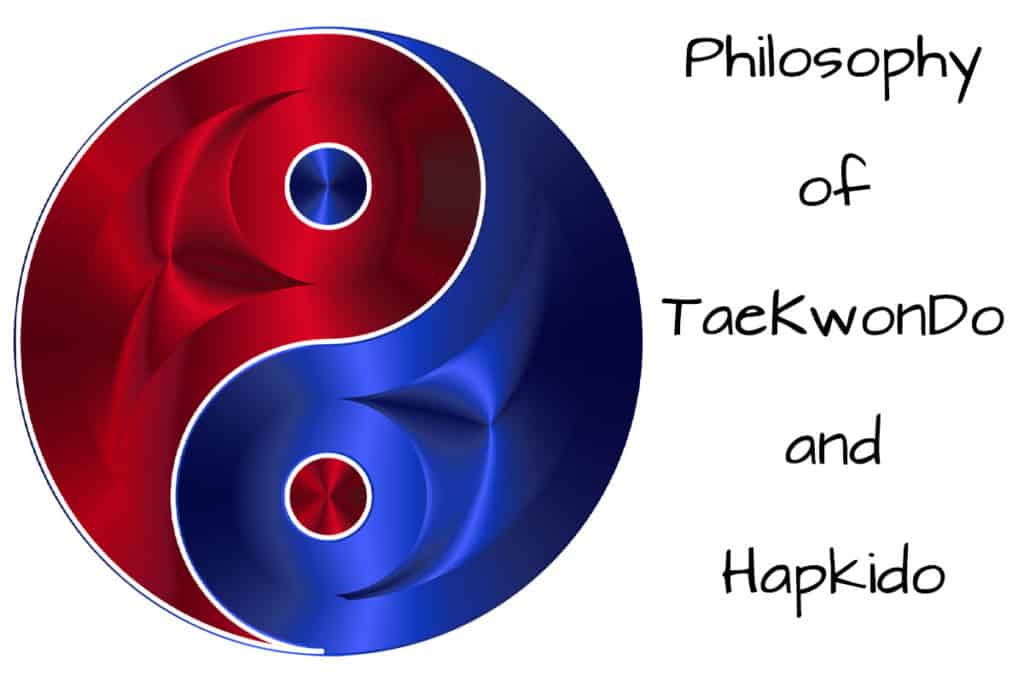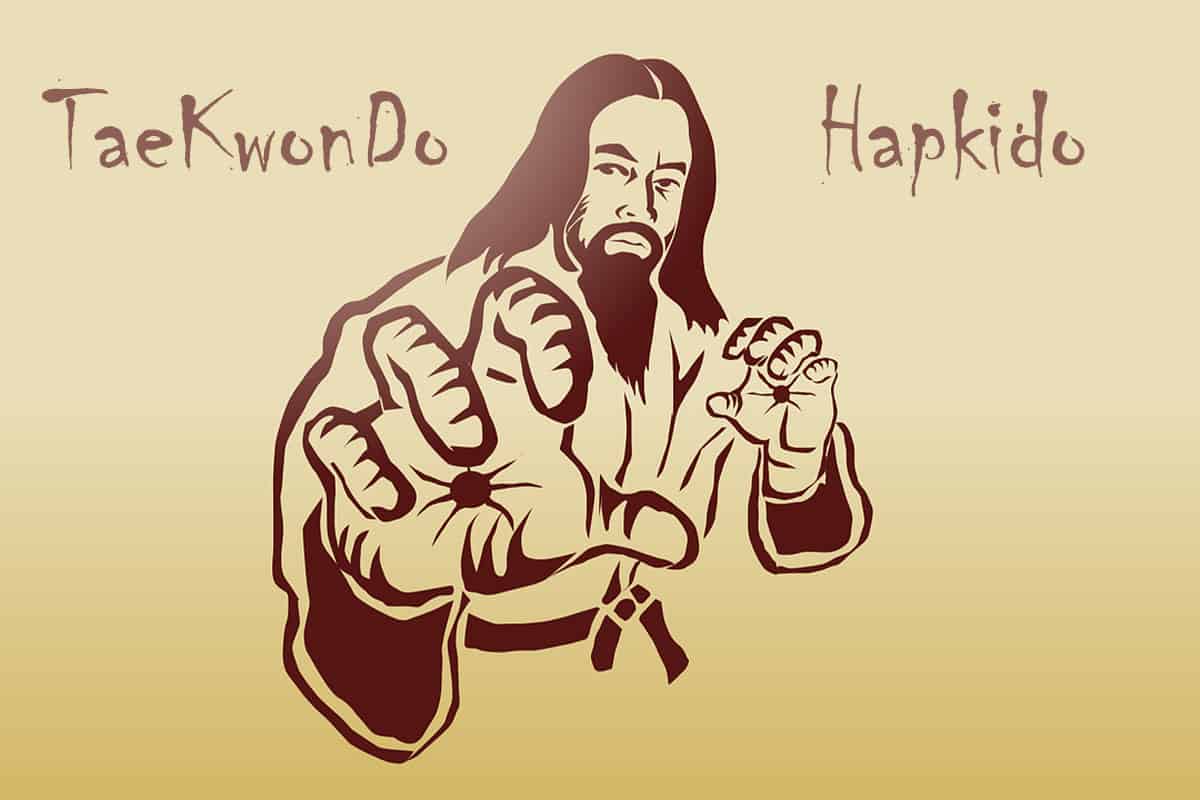
The martial arts of TaeKwondo and Hapkido share some similarities and some vast differences even though both are rather young martial arts and both come from Korea.
The main differences between Taekwondo and Hapkido is in their histories, techniques, and philosophies. Hapkido includes more falls and weapons where TaeKwonDo uses more limited and structured movements that do not include any falls or ground work.
Below, we’re going to compare these two Korean martial arts in detail and see how they match up against one another, so lets begin!
Origins of Hapkido
Like with TaeKwondo, Hapkido is a fairly young martial art that also began in Korea. This martial are is less than a 100 years old, but it still has a unique story that include quite a few people that helped grow this martial art.
The martial art of Hapkido was created by a group of Korean martial artists after the Japanese colonial period in Korea ended. Here is a quick bio of the innovators and how they helped establish and grow Hapkido.
Master Choi Yonh-Sool
As a boy, Master Choi was sent to live in Japan. There he began training the Japanese martial art of Daitō-ryū(Precursor to Aikido) for 30 years directly under its inventor Takeda Sokaku.
The story of is time training there is disputed by some martial artists, but there is one certain fact. That is he taught many students that would either help grow Hapkido or went on to create their own martial arts styles.
Seo Bok-Seob:
Master Choi’s first student and his successor. In his early 20s, Seo had already earned a judo black and graduated from Korea University before training under Choi.
Seo became his student after he saw Choi defend himself against a group of men at his father’s brewery. He would go on to open the first dojang of Hapkido, as well as incorporate judo throws, and create the first symbol of Hapkido.
Ji Han-Jae
Another one of Choi’s first students that heavily influenced the development of Hapkido. As a teacher, Ji would incorporate punching and kicking techniques he learned prior to training with Master Choi, which would later become part of Hapkido’s curriculum.
He even synthesized the name Hapkido and would help spread it internationally from his work with the South Korean president’s personal guards and found the Korea Hapkido Federation.
Chang Chin II:
hin was the second grandmaster of Hapkido that was personally given the title of “doju”(grandmaster) by Master Choi himself and the first Hapkido master to be awarded the title of 9th dan.(Also given by Master Choi) Master Chin was the pupil of Master Choi spending years being trained personally by Choi as he was the chosen heir and next Hapkido grand master.
During his life, Master Chin would continue sharing the art of Hapkido from teaching classes at the United Nation and at his personal school in New York City, where taught until his death in 2018.
Origins of TaeKwonDo
Just for a refresher, here is a quick breakdown of the origins of TaeKwondo. The art of TaeKwondo also began to form after the end of Japanese colonialism in Korea around the same time as Hapkido. The techniques however are not new.
Many of the techniques of TaeKwondo come from ancient Korean and Chinese martial arts. The ancient art of Taekkyeon in particular influenced many of the kicks you see in TaeKwondo.
But thanks to eras of foreign nations occupying Korea like with Japan many of the ancient Korean arts were forgotten. After Japanese colonialism ended Korea was able to be free and form their own identity.
Many kwans(martial arts schools) began to open starting in 1945 with instructors teaching traditional Korean martial arts techniques that weren’t allowed during Japanese occupation. People like General Choi Hong-hi, who is considered the founder of TaeKwondo started pushing for organization within the martial art.
In a short period of time TaeKwondo became globally practiced martial art. Within less than 50 years, TaeKwondo became the official martial art of Korea, the Korean military, had organizations found to govern it, and eventually became an Olympic event.

Philosophy of Hapkido
There are various forms of Hapkido that favor different forms, but share one common thing. That is the techniques they teach must follow the three principles of Hapkido.
Hwa
This means harmony. The rule means that you should be relaxed at all times and never directly oppose the force of an opponent. Meaning if an opponent uses force against you that you should flow with it and set your counter to their attack.
Won
This word means, the circle principle. In Hapkido all of the techniques are done in a natural and free flowing way. All of their techniques are based around redirecting the energy of an opponent and use it against them.
Yu
Yu means the water principle. This is similar to the “be like water” principle Bruce Lee spoke about in his martial art theories. Water can flow and mold around its surrounding, so this is how the technique in Hapkido should be.
These principles could be translated to everyday life in that one should live a life of peace and always flow with the energy around you.
Philosophy of TaeKwondo
The philosophies taught in TaeKwondo go beyond just the physical techniques that are taught. As you go through the journey to your black belt and beyond, you learn to become a better person.
Grand Master of TaeKwondo, James S. Benko describes the philosophy of TaeKwondo as this. “The art of TaeKwondo strives to develop the positive aspects of an individual’s personality.
Respect, courtesy, goodness, trustworthiness, loyalty, humility, courage, patience, integrity, perseverance, self-control, indomitable spirit, and a sense of responsibility to help and respect all.”
On your path to black belt, you evolve into a more conscious person. You are supposed to strive to live a peaceful life and always try to do the right thing.
Styles of Hapkido
Hapkido is hybrid martial arts that took techniques and principles of other martial arts to form it. Since it is a hybrid martial art, there are many offshoots of Hapkido.
Some examples include: Combat Hapkido, Jin Jung Quan Hapkido, Shinsei Hapkido, and Sin Moo Hapkido. Their curriculums may not be the same, but they all follow the same core principles that Hapkido was founded upon.
Styles of TaeKwondo
The techniques of TaeKwondo are generally the same with every type of style. The style depends on which TaeKwondo federation they’re associated with, because there’s types of competitions in each federation.
For example, schools associated with World TaeKwondo are more geared toward sport TaeKwondo that you see in the Olympics.
Techniques of TaeKwondo
The art of TaeKwondo relies upon speed and precision in its techniques primarily done from standing. Students of TaeKwondo practice a multitude of punches and kicks that go from all angles.
Jumping and spinning at added to the techniques to increase speed and force and all strikes are done from the groin and up.
Techniques of Hapkido
The techniques of Hapkido are more of counter moves. In most forms of Hapkido, your attacks are based on the movements of your opponents. It is also an eclectic martial that includes striking and grappling techniques.
Depending on the opponent’s movements, a Hapkido practitioner will look to counter it with a takedown, strike, or a mix of both.
Generally the end result is the opponent is on the ground in some sort of joint lock to immobilize them.
Weapons of TaeKwondo and Hapkido
As stated previously traditional Taekwondo does not have a curriculum for use of weapons. Some TaeKwondo schools may have a class for weapons if the instructor studied a different
In Hapkido to advance to your next belt, you must show that you can defend yourself against various types of weapons attack. This is to prepare you for all types of situations you may encounter in life. Defenses against knives, baton, and rope, and even guns pending on the school.
Similarities in Competitions
Competitions for these two martial arts are actually run similarly to one another. They’re both done on a mat around 8×8, with a referee and multiple judges there to see an award points.
The difference is that in a Hapkido competition, you are awarded points for throws, and joint locks. So, a Hapkido competitions is also a little similar to a Judo competition, but with certain strikes allowed to permitted areas.
Federation and Associations of Hapkido and TaeKwondo
TaeKwondo is governed respectively by one of these federations/associations. World TaeKwonDo(Kukkiwon), International TaeKwondo Federation(ITF), and the American TaeKwondo Association(ATA).
The top associations/federations for Hapkido include respectively: Korean Hapkido Federation, Global Hapkido Association, and World Kido Federation. Each group strives to honor the integrity of Hapkido.
Real Life Effectiveness
Both are great martial arts and great for self defense, but each excel in areas, where the other is lacking. Where TaeKwondo excels more than Hapkido is striking from a distance.
If a TaeKwondo that finds themselves in a real life situation, then they can be hard to deal with if they can get the distance to land their strikes.
Hapkido would have the edge in close combat, where most real life conflicts take place. The goal in Hapkido is to close the distance without getting hurt and immobilize an opponent on the ground usually with a joint lock.
Another area Hapkido is ahead of TaeKwondo is dealing with weapon attacks. TaeKwondo is usually trained for sport like competitions and weapon defense training isn’t included in traditional curriculums. Hapkido has certain aspects of training that are dedicated to showing how to deal with weapon attacks.
These young Korean martial arts have different methods, but one very important trait they share is that they provide self defense. For a martial artist or personal looking to learn self defense, they can take something away from both of these martial arts.
The speed and precision of TaeKwondo techniques, and the flowing counters of Hapkido. Learning one of these martial arts with make you healthier physically and spiritually, while providing a method of self defense.


